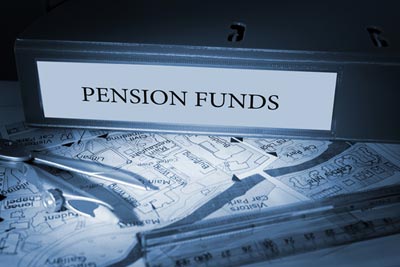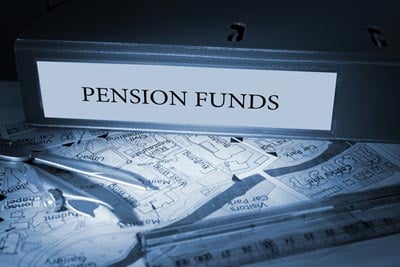
 (Image: Pension funds via Shutterstock)In recent years there has been a regular drum beat of news stories warning us about the enormous unfunded liabilities of state and local pension funds. Much of this has come from reports issued from well-endowed foundations, most notably the Pew and Arnold foundations who have a joint project on public pensions.
(Image: Pension funds via Shutterstock)In recent years there has been a regular drum beat of news stories warning us about the enormous unfunded liabilities of state and local pension funds. Much of this has come from reports issued from well-endowed foundations, most notably the Pew and Arnold foundations who have a joint project on public pensions.
Ostensibly these foundations are simply providing information to allow the public to address a major policy problem. However, it is difficult not to ask whether these foundations may be pursuing a different agenda.
First, the reports tend to be focused on highlighting the size of the problem. A quick look at Pew’s pension page shows the publication “The Widening Gap Update.” The lead line in the description is that state pensions had incurred unfunded liabilities of $737 billion as of 2010. The updated version, “The Fiscal Health of State Pension Plans: Funding Gap Continues to Grow” tells readers that the size of the gap had grown to $915 billion based on 2012 data.
That sounds very scary since none of us will ever see $915 billion or anything close to it in our lifetimes. The numbers also conveys pretty much zero information, or at least no more than if Pew had written “really big number.”
Pew could have easily written this number in a way that would be meaningful to readers. For example, it could have told readers that the shortfall is equal to approximately 0.2 percent of projected GDP over the next thirty years, the period over which the shortfall would have to be filled. Alternatively, it could have told readers that the shortfall is equal to a bit less than 2.0 percent of projected state and local tax revenues over this period. Either of these numbers would have given readers a much better sense of the size of the projected shortfall, although they may not have been as effective in prompting fear as $915 billion.
What is also striking about Pew’s pension pages is how little discussion there is of the fees that pension funds pay to the people who manage their money. This is striking for two reasons.
First, there can be serious differences about how much state and local governments should be paying their workers in pensions. There is no magic right formula for structuring pensions. But this is to a large extent a zero sum game: savings to the government means less money for workers and vice-versa. (It’s not entirely zero sum, since the quality of the pension will affect worker retention and the commitment of public employees to their jobs.)
However, there is no argument that state and local pension funds should ever pay one dollar more than necessary to the people who manage their pensions. These are typically highly paid people in the financial industry who are effectively pocketing money at the expense of the states’ workers and taxpayers.
The other reason Pew’s neglect of this issue is striking is that there have been a number of scandals in recent years about payoffs being made for control of pension fund assets. One recent scandal involved Steve Rattner, the Obama administration’s car czar. Rattner agreed to pay $6.2 million to the Securities and Exchange Commission, and later paid $10 million in restitution to the State of New York, to settle charges that he had made payoffs to get control of the management of the state’s pension fund money.
More recently, David Sirota, a reporter at Pandodaily, has written a number of pieces indicating that management of pension funds has regularly been handed out as a political favors to campaign contributors. If pension fund managers were just paid the market price for their services, they would not be making payoffs for the right to manage state and local funds.
And the money involved is substantial. If the overpayments are equal to 0.25 percent of pension fund assets, they would come to $7.5 billion annually, which is roughly 3.0 percent of current pension benefits. If the overpayments come to 0.5 percent of pension fund assets, they would be equal to $15 billion a year or 6.0 percent of current benefits. If that seems small, try suggesting to a group of public sector workers that their pensions be cut by 6.0 percent or alternatively suggest to a group of state legislators that they raise the pensions of public sector workers by 6.0 percent.
There seems a simple and obvious solution to this problem: transparency. Every contract for managing pension fund money should be posted on the web and show in plain language the exact fee structure. That way anyone in the country can examine it and assess whether a particular government is overpaying.
For some reason there is no real discussion of measures seeking increased fee transparency on Pew’s website. In this respect, it is perhaps worth noting that the funding for Pew’s partner, the Arnold Foundation, comes from John D. Arnold. Mr. Arnold made his fortune as hedge fund manager.
Our most important fundraising appeal of the year
December is the most critical time of year for Truthout, because our nonprofit news is funded almost entirely by individual donations from readers like you. So before you navigate away, we ask that you take just a second to support Truthout with a tax-deductible donation.
This year is a little different. We are up against a far-reaching, wide-scale attack on press freedom coming from the Trump administration. 2025 was a year of frightening censorship, news industry corporate consolidation, and worsening financial conditions for progressive nonprofits across the board.
We can only resist Trump’s agenda by cultivating a strong base of support. The right-wing mediasphere is funded comfortably by billionaire owners and venture capitalist philanthropists. At Truthout, we have you.
We’ve set an ambitious target for our year-end campaign — a goal of $250,000 to keep up our fight against authoritarianism in 2026. Please take a meaningful action in this fight: make a one-time or monthly donation to Truthout before December 31. If you have the means, please dig deep.